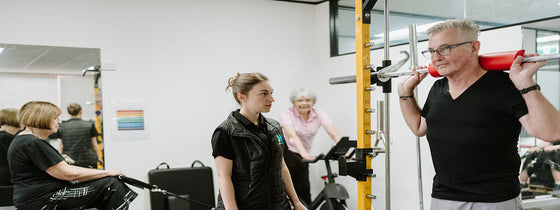Migraines, characterised by severe headaches, sensory sensitivities, nausea, and sometimes aura, require a comprehensive management strategy – and did you know OHL team members could be part of this team for you?
A migraine management team often involves collaboration with physiotherapists, dietitians, GPs, and potentially neurologists. These professionals work together to identify and address triggers, improve physical resilience, and provide tailored strategies for stress relief and dietary adjustments. The goal is to reduce the frequency and severity of migraines, thereby enhancing overall quality of life! Sound good? Read on to learn more…
Migraines present with distinctive signs and symptoms that can vary in intensity and duration. Typically, individuals experience severe, throbbing headaches localised to one side of the head, which may shift during an episode. Sensory sensitivities are common, including heightened sensitivity to light (photophobia), sound (phonophobia), and sometimes smells. Nausea and vomiting often accompany these symptoms, exacerbating discomfort. Some individuals experience sensory disturbances known as aura, which can manifest as visual changes or tingling sensations. Recognising these hallmark symptoms is crucial for effective migraine management.
Diagnosing migraines involves a collaborative approach among physiotherapists, GPs, and potentially neurologists. They assess symptoms through detailed medical history and physical examination to differentiate migraines from other headaches such as tension headaches or cluster headaches. Imaging tests like CT scans or MRIs may be employed in severe or atypical cases to rule out underlying causes, ensuring a tailored treatment plan based on each individual's specific migraine type and triggers.
An OHL Physios and Dietitians can play crucial roles in managing migraines by addressing various factors and enhancing overall physical well-being. Identifying triggers such as stress, certain foods, hormonal changes, or environmental factors is essential. Keeping a symptom diary can help pinpoint specific triggers!
More specifically, what does Physio do for migraine sufferers? Physiotherapy focuses on addressing musculoskeletal imbalances, providing postural guidance , and releasing tension through techniques like massage and joint mobilisation to improve neck, thoracic, and shoulder function. Tailored exercise programs are designed to gradually increase tolerance to physical activity and stressors without triggering migraines, improving cardiovascular fitness and strength while respecting individual pacing needs.
Stress relief is a significant component of migraine management. Incorporating relaxation exercises, mindfulness practices, and breathing techniques into the treatment plan can reduce overall stress levels. Our OHL Dietitian evaluate dietary triggers and develop personalised nutrition plans that eliminate migraine-triggering foods, ensure adequate hydration, and optimise overall diet to stabilise blood sugar and manage food sensitivities.
Ok, that’s a lot of information, so lets summarise… By combining physiotherapy and dietetic expertise with self-management strategies, individuals can effectively manage migraines, reduce the frequency and severity of attacks, and improve overall quality of life. Scheduling a consultation with us on 9431 5955 (or booking online via the Client Portal on our website) to develop a personalised treatment plan that addresses unique migraine triggers and symptoms can empower individuals to live more comfortable and fulfilling lives! Don’t delay relief OHL community!

OHL is integrating a new athletic screening assessment into its practice to further enhance our community's sporting ability. This screening assessment combines range of motion, strength profiling, force deck analysis, and subjective training status to give athletes a comprehensive performance snapshot. By establishing a baseline and identifying key areas for improvement, we can tailor your training to enhance performance, provide insight on key metrics, and stay resilient throughout the season. Whether you're preparing for preseason, managing midseason demands, or simply aiming to train smarter, this assessment delivers the data-driven insights you need.

If you're experiencing back or neck pain with neurological signs and symptoms, a thorough neurological examination is crucial for accurate assessment and effective treatment. In this Optimal Tip learn more about what we mean by completing a neurological exam!

Squats, deadlifts, and calf raises are key movement patterns that should be part of every strength and conditioning program—regardless of age and activity level. These functional movements support joint health, improve posture and balance, and reduce the risk of injury while building strength where it matters most.